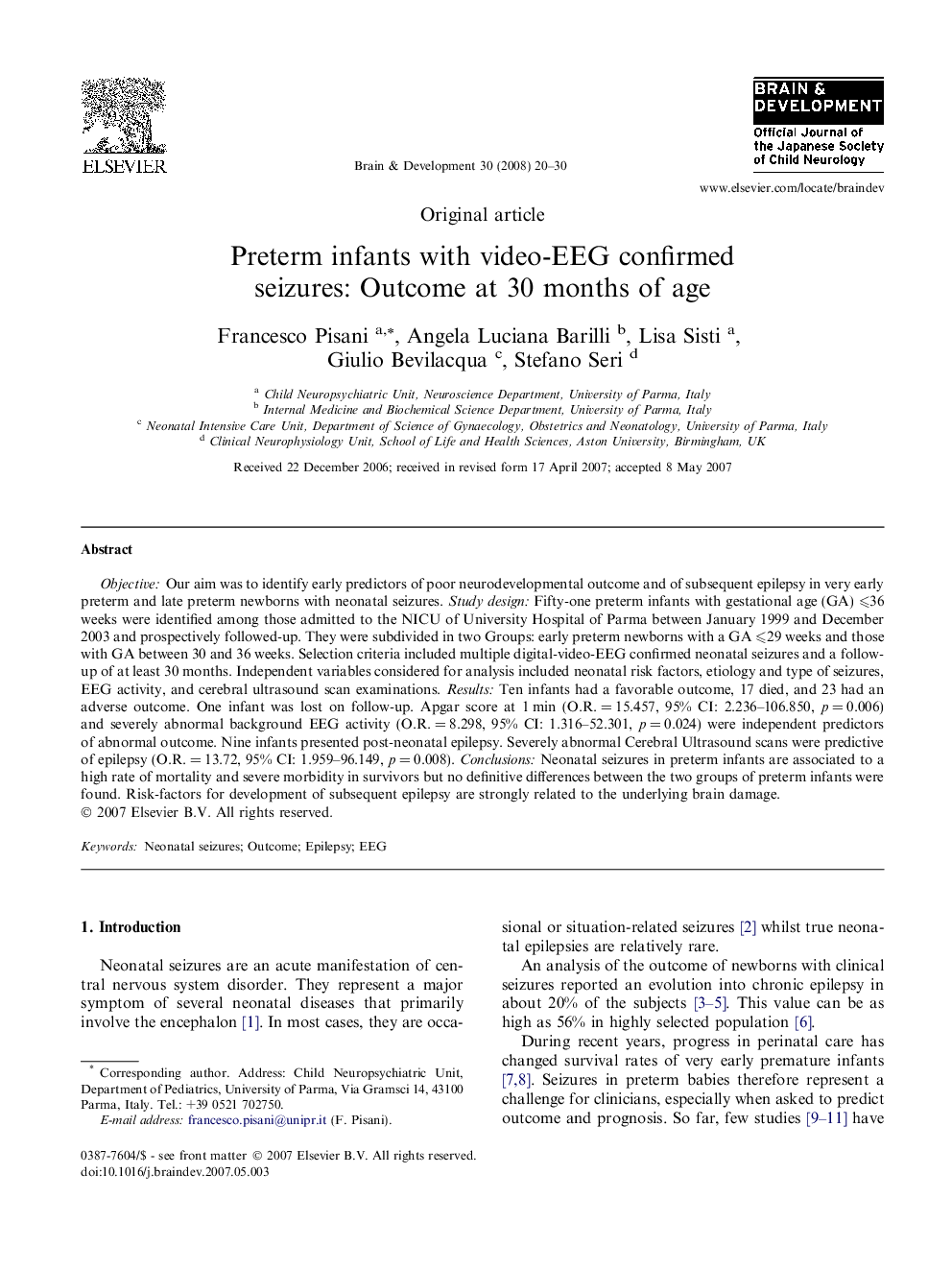| Article ID | Journal | Published Year | Pages | File Type |
|---|---|---|---|---|
| 3038473 | Brain and Development | 2008 | 11 Pages |
ObjectiveOur aim was to identify early predictors of poor neurodevelopmental outcome and of subsequent epilepsy in very early preterm and late preterm newborns with neonatal seizures. Study design: Fifty-one preterm infants with gestational age (GA) ⩽36 weeks were identified among those admitted to the NICU of University Hospital of Parma between January 1999 and December 2003 and prospectively followed-up. They were subdivided in two Groups: early preterm newborns with a GA ⩽29 weeks and those with GA between 30 and 36 weeks. Selection criteria included multiple digital-video-EEG confirmed neonatal seizures and a follow-up of at least 30 months. Independent variables considered for analysis included neonatal risk factors, etiology and type of seizures, EEG activity, and cerebral ultrasound scan examinations. Results: Ten infants had a favorable outcome, 17 died, and 23 had an adverse outcome. One infant was lost on follow-up. Apgar score at 1 min (O.R. = 15.457, 95% CI: 2.236–106.850, p = 0.006) and severely abnormal background EEG activity (O.R. = 8.298, 95% CI: 1.316–52.301, p = 0.024) were independent predictors of abnormal outcome. Nine infants presented post-neonatal epilepsy. Severely abnormal Cerebral Ultrasound scans were predictive of epilepsy (O.R. = 13.72, 95% CI: 1.959–96.149, p = 0.008). Conclusions: Neonatal seizures in preterm infants are associated to a high rate of mortality and severe morbidity in survivors but no definitive differences between the two groups of preterm infants were found. Risk-factors for development of subsequent epilepsy are strongly related to the underlying brain damage.
